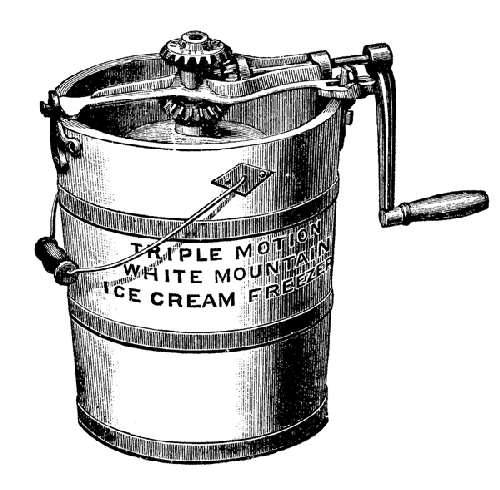8. Liquid Smoke: Distilled Smoke Vapor
Smoking—burning wood
chips and directing either the hot or cold smoke vapors to come in contact with items such
as meats—is a method for curing and preserving foods. Smoking also deposits a number of
flavors onto the food that are generated as byproducts of the chemical reactions that
occur when wood is combusted. The commercial food industry uses liquid smoke to infuse
smoke flavor into foods that are traditionally smoked, such as bacon, and into foods for
which the flavor is enhanced by smoke essence, such as “smoked” tofu.
The simplest way of creating a smoked flavor in your cooking—besides actually smoking
it—is to include ingredients that are already smoked and contain those chemical compounds.
You can infuse smoke flavors into your dish by adding spices such as chipotle peppers or
smoked paprika, or by using dry rubs with smoked teas such as Lapsang Souchong. Tobacco,
too, can be used to similar effect; some novel restaurant dishes include components like
tobacco-infused crème anglaise. However, including smoked ingredients will also bring
along the other flavors of the substance being used. Some dishes can use smoked salts, for
example, but for many applications, this will contribute too much salt. This is where
liquid smoke comes in.
A cook can use liquid smoke to highlight the smoky “toasted” flavors of foods,
especially those that have similar molecular compounds to smoke, such as coffee, peanut
butter, or Scotch whisky. You can also use it to impart smoke flavor in those situations
where grilling isn’t an option—say, on the 27th floor of your apartment complex.
Note:
When buying liquid smoke, look for an ingredient list that reads “smoke, water.” Try
to avoid products that have molasses or other additives.
Some of the more unusual uses allow for bringing smoked flavor to foods that can’t
normally be tossed onto a wood-burning grill, such as tofu, ice cream, or liquids (along
with some sandalwood incense and Chanel No. 5, if you’re Maggie from Northern
Exposure). Butter also has some of the same phenols as smoke; try adding it
to butter for table service with bread.
The big long evil list of nasty chemicals and ingredients that one would expect to see
on a liquid smoke bottle? “Water, smoke.” In and of itself, liquid smoke is not
artificial. It does not undergo any chemical modifications or refining steps that alter or
change the compounds that would have been present in traditional smoking.
In theory, some of the mutagenic compounds (those that cause cancer) normally present
in traditionally smoked foods are present in much smaller quantities in liquid smoke,
meaning that liquid smoke might actually be somewhat safer for you than traditionally
smoked foods. However, be aware that liquid smoke will have some amount of mutagenic
compounds present. As a substitute for smoking foods, it should be as safe as traditional
smoking, but you probably shouldn’t douse a teaspoon of it on your morning eggs every day
until further research is done.
This recipe uses liquid smoke to impart the
toasted flavor of campfire-roasted marshmallows. The concept was inspired by a demo by
Kent Kirshenbaum of NYU’s Experimental Cuisine Collective. You’ll need a standard ice cream mixer, or you can go all-out geek and
either make your own or use liquid nitrogen or dry
ice. To create the base, combine in a mixing bowl: 2 cups (475g) whole milk 1 cup (238g) heavy cream ⅓ cup (75g) sugar ¼ cup (75g) chocolate syrup ¾ cup (25g) medium-sized marshmallows 15 drops (0.75g) liquid smoke
Proceed with the directions for your chosen method of making ice cream. Once the ice
cream has set, stir in: 1 cup (60g) graham crackers, toasted and chopped into
pieces
Serve with hot fudge or chocolate syrup—whipped cream, cherries, and nuts
optional. 
|
In a large baking pan (9″ × 13″ / 23 cm × 33 cm), place:
2 pounds (1kg) pork baby back ribs, excess fat trimmed
off
In a small bowl, create a dry rub by mixing:
1 tablespoon (15g) salt
1 tablespoon (15g) brown sugar
1 tablespoon (9g) cumin seed
1 tablespoon (9g) mustard seed
20 drops (1g) liquid smoke
Cover ribs with spice mix. Cover baking pan with foil and bake at 300°F / 150°C for
two hours.
In a small bowl, create a sauce by mixing:
4 tablespoons (60g) ketchup
1 tablespoon (15g) soy sauce
1 tablespoon (15g) brown sugar
1 teaspoon (5g) Worcestershire sauce
Remove foil from baking pan and coat ribs with sauce. Bake for 45 minutes, or until
done.
Note
Experiment with other savory spices in the dry rub, such as chilies,
garlic, or paprika. Also, try adding items such as onions, garlic, or Tabasco to
the sauce.